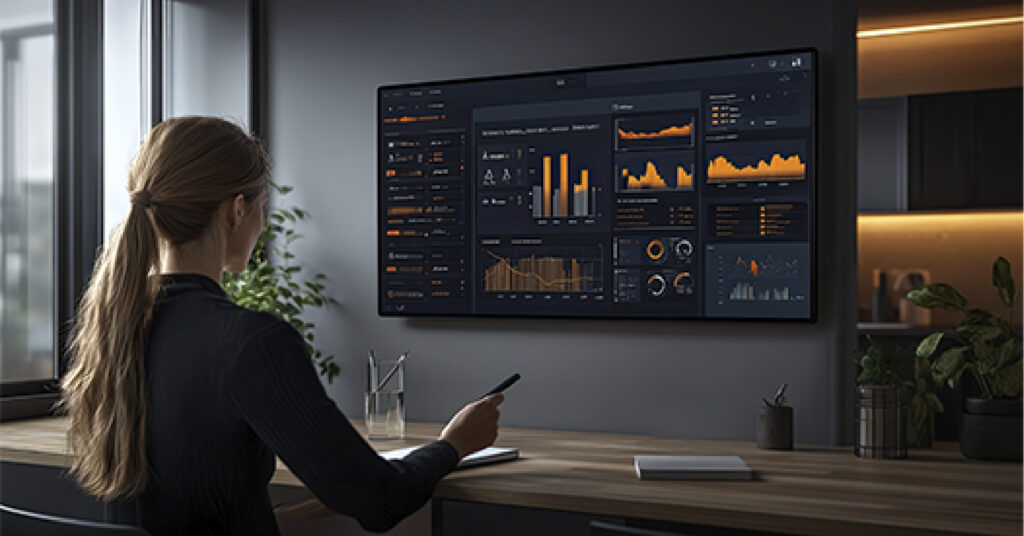Every business needs to buy goods and services. But are you doing it the smartest way possible? Are you getting the best deal, managing your suppliers effectively, and avoiding unnecessary risks? This is where Procurement Analytics comes in—it’s a way to turn your procurement process into a data-driven strategy. By analyzing purchasing data, businesses can identify ways to reduce costs, improve supplier relationships, and minimize risks. This guide will walk you through everything you need to know about procurement analytics, how it works, and why it’s essential for modern businesses.
Table of Contents
What is Procurement Analytics?
Procurement Analytics refers to collecting, organizing, and analyzing procurement data to gain insights that help businesses make informed purchasing decisions. It includes everything from understanding where your money is being spent, to evaluating the performance of suppliers, and identifying opportunities for cost savings.
By leveraging data from contracts, purchase orders, invoices, and supplier reports, procurement analytics provides a comprehensive view of an organization’s procurement activities. This allows businesses to optimize their spending, reduce risks, and improve supplier performance.

How It Works
Procurement analytics follows a series of steps to convert raw data into actionable insights:
- Data Collection: Procurement data comes from multiple sources, such as ERP systems (Enterprise Resource Planning), supplier scorecards, and market trends.
- Data Organization: After collecting the data, it needs to be cleaned, de-duplicated, and standardized to ensure accuracy.
- Data Analysis: Using analytics tools, businesses can analyze spending patterns, assess supplier performance, and detect potential risks.
- Actionable Insights: The final step is using these insights to make data-driven decisions. For instance, you may identify a high-performing supplier to negotiate better terms or spot areas where you can consolidate spending to cut costs.
Benefits of Procurement Analytics
Now that we know what procurement analytics is, let’s look at its key benefits.
1. Cost Savings
By analyzing spend data, procurement analytics helps companies find areas where they can reduce costs. For instance, it may reveal that you’re purchasing the same product from multiple suppliers at different prices, signaling an opportunity to consolidate orders with a preferred vendor.
Stat: On average, businesses that adopt procurement analytics see a 10-15% reduction in procurement costs by improving visibility into their spending patterns.
2. Improved Supplier Management
Supplier performance is critical to maintaining an efficient supply chain. Procurement analytics tracks supplier KPIs (Key Performance Indicators) such as on-time delivery rates, quality of products, and contract compliance. This allows businesses to identify top-performing suppliers and work closely with them, while renegotiating or replacing underperforming ones.
3. Risk Mitigation
Procurement analytics helps businesses manage risk by identifying potential problems in the supply chain before they escalate. For instance, it can highlight a supplier’s financial instability or geopolitical risks that could disrupt the supply of goods.
Stat: 60% of supply chain disruptions could be avoided with predictive analytics that highlight potential risks in advance.
4. Faster, Data-Driven Decisions
Instead of making decisions based on intuition or outdated information, procurement analytics provides real-time insights that allow you to make faster, more informed decisions. Whether it’s adjusting your budget or renegotiating a supplier contract, having accurate data at your fingertips improves decision-making.
Types of Procurement Analysis

1. Spend Analysis: Where’s the Money Going?
Think of spend analysis as a way to see where every dollar is going. It looks at all the money you’re spending across different categories—like materials, services, and vendors. This helps you find out if you’re paying too much for something or if there’s a better deal out there.
- Why It Matters: Helps spot overspending and opportunities to save money.
- Example: You might find out that you’re paying different prices for the same item from two suppliers—giving you a chance to negotiate or consolidate orders.
2. Supplier Performance Analysis: Are Your Suppliers Keeping Up?
Not all suppliers deliver the same quality and reliability. Supplier performance analysis helps you keep track of how well each supplier is doing. It looks at things like delivery times, product quality, and how well they stick to agreed prices and terms.
- Why It Matters: Ensures you’re working with reliable partners.
- Example: If a supplier is frequently late, you can switch to a more reliable one before delays start costing you money.
3. Contract Management Analysis: Getting the Most Out of Agreements
Contracts include pricing details, delivery schedules, and service expectations. This analysis ensures that you’re not missing out on discounts or better terms hidden in the fine print.
- Why It Matters: Keeps you from missing opportunities for cost savings.
- Example: It might alert you to a discount you’re eligible for but haven’t been using, saving your business money over time.
4. Risk Analysis: Avoiding Surprises
Risk analysis looks for potential problems that could disrupt your supply chain—like a supplier going out of business or economic shifts affecting prices. It helps you plan for these issues before they happen.
- Why It Matters: Helps prevent unexpected problems that can slow down your business.
- Example: If a key supplier is in financial trouble, you can start looking for alternatives before it affects your operations.
Sources of Procurement Data
1. Internal Data
- ERP Systems: Tracks purchase orders, invoices, payments, and procurement-related transactions.
- Supplier Performance Records: Provides information on how well suppliers are performing.
- Financial Data: Includes spending patterns, budgets, and cash flow related to procurement.
2. External Data
- Market Trends: Offers insights into pricing fluctuations and supply-demand dynamics in the industry.
- Supplier Reports: Includes supplier ratings, financial stability, and performance benchmarks.
- Benchmarking Data: Compares your procurement performance with industry standards or competitors.
Recommended Tools for Each Type of Marketing Analytics
Now that you know the different types of marketing analytics, let’s look at some tools that can help you make the most of each one:
1. Descriptive Analytics: Google Analytics
- Why It’s Great: Tracks website traffic, user behavior, and conversion rates in detail. Perfect for summarizing past performance.
2. Diagnostic Analytics: HubSpot Analytics
- Why It’s Great: Offers deep insights into why campaigns succeed or fail by combining data from multiple channels (email, social, web).
3. Predictive Analytics: IBM Watson Analytics
- Why It’s Great: Uses AI to predict future trends and customer behavior, making it easier to plan and optimize marketing efforts.
4. Prescriptive Analytics: Adobe Analytics
- Why It’s Great: Goes beyond predictions by offering recommendations on how to improve campaigns, allocate budgets, and target customers more effectively.
5. Real-Time Analytics: Sprout Social
- Why It’s Great: Monitors real-time social media engagement, helping marketers track the immediate impact of their social campaigns and adjust on the fly.
Some Marketing Analytics Tools You Need to Check Out
Now that you know the different types of marketing analytics, let’s look at some tools that can help you make the most of each one:
1. Descriptive Analytics: Google Analytics
- Why It’s Great: Tracks website traffic, user behavior, and conversion rates in detail. Perfect for summarizing past performance.
2. Diagnostic Analytics: HubSpot Analytics
- Why It’s Great: Offers deep insights into why campaigns succeed or fail by combining data from multiple channels (email, social, web).
3. Predictive Analytics: IBM Watson Analytics
- Why It’s Great: Uses AI to predict future trends and customer behavior, making it easier to plan and optimize marketing efforts.
4. Prescriptive Analytics: Adobe Analytics
- Why It’s Great: Goes beyond predictions by offering recommendations on how to improve campaigns, allocate budgets, and target customers more effectively.
5. Real-Time Analytics: Sprout Social
- Why It’s Great: Monitors real-time social media engagement, helping marketers track the immediate impact of their social campaigns and adjust on the fly.
All-in-One Solution: Data Semantics
If managing multiple tools feels overwhelming, an all-in-one solution like Data Semantics can simplify everything. This platform brings together all five types of marketing analytics tools in one place, making it easy to track, analyze, and optimize your campaigns.
Why Data Semantics Stands Out:
- Unified Dashboard: Tracks data from all your marketing channels—social media, email, ads, and more—in one platform.
- Advanced Insights: Offers predictive and prescriptive analytics to help you make smarter decisions.
- Real-Time Monitoring: Provides live insights so you can adjust your campaigns as they happen.
Whether you’re looking to track past performance, understand what’s working, or plan for the future, Data Semantics has everything you need in one powerful solution.
Conclusion: Mastering Marketing Analytics
Mastering marketing analytics isn’t just about tracking data—it’s about using that data to make better decisions. Whether you need to understand past results with descriptive analytics, find out why things happened with diagnostic analytics, or look ahead with predictive analytics, the right tools will help you get there.
For marketers looking for simplicity, the tools listed here—like Data Semantics—offer the insights you need to make smarter, data-driven decisions. Ready to take control of your data and improve your marketing? Start by mastering these five types of analytics.













